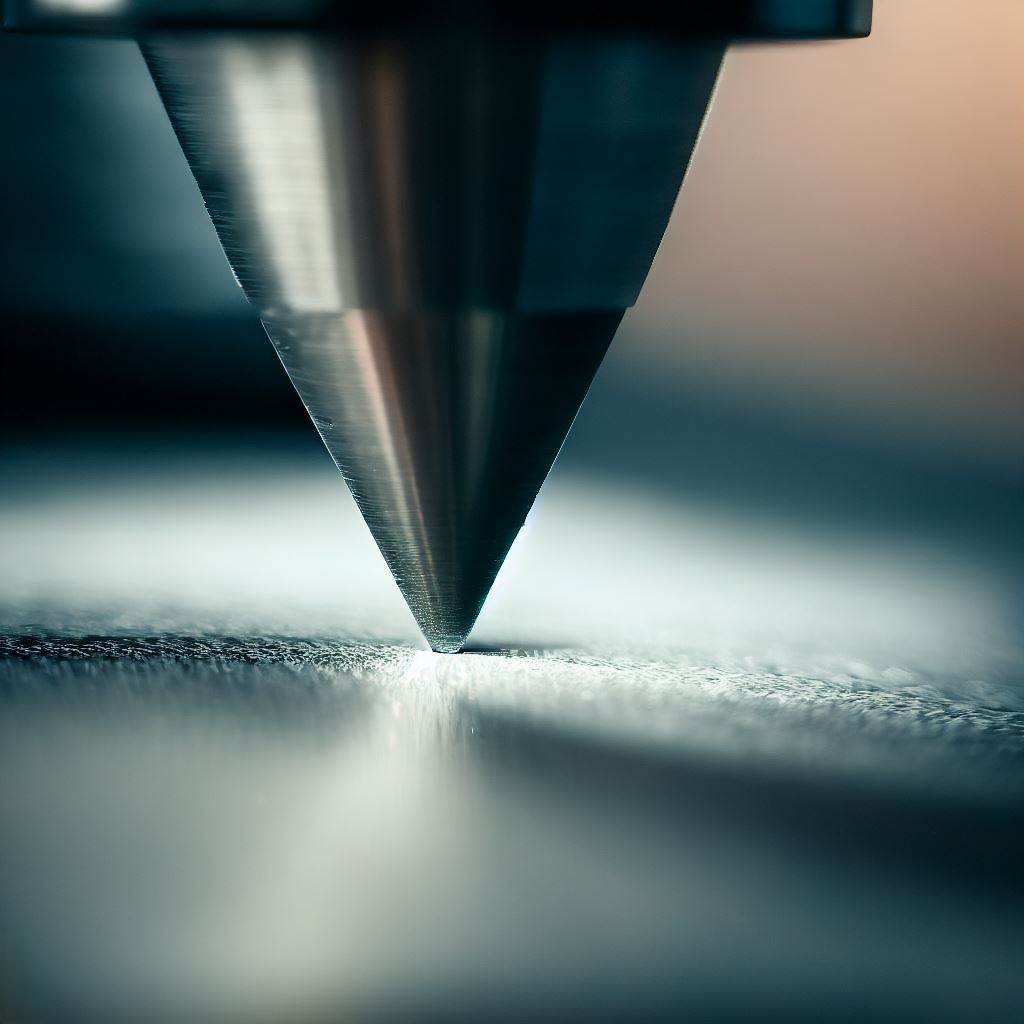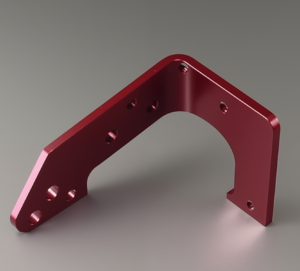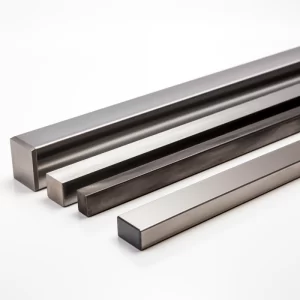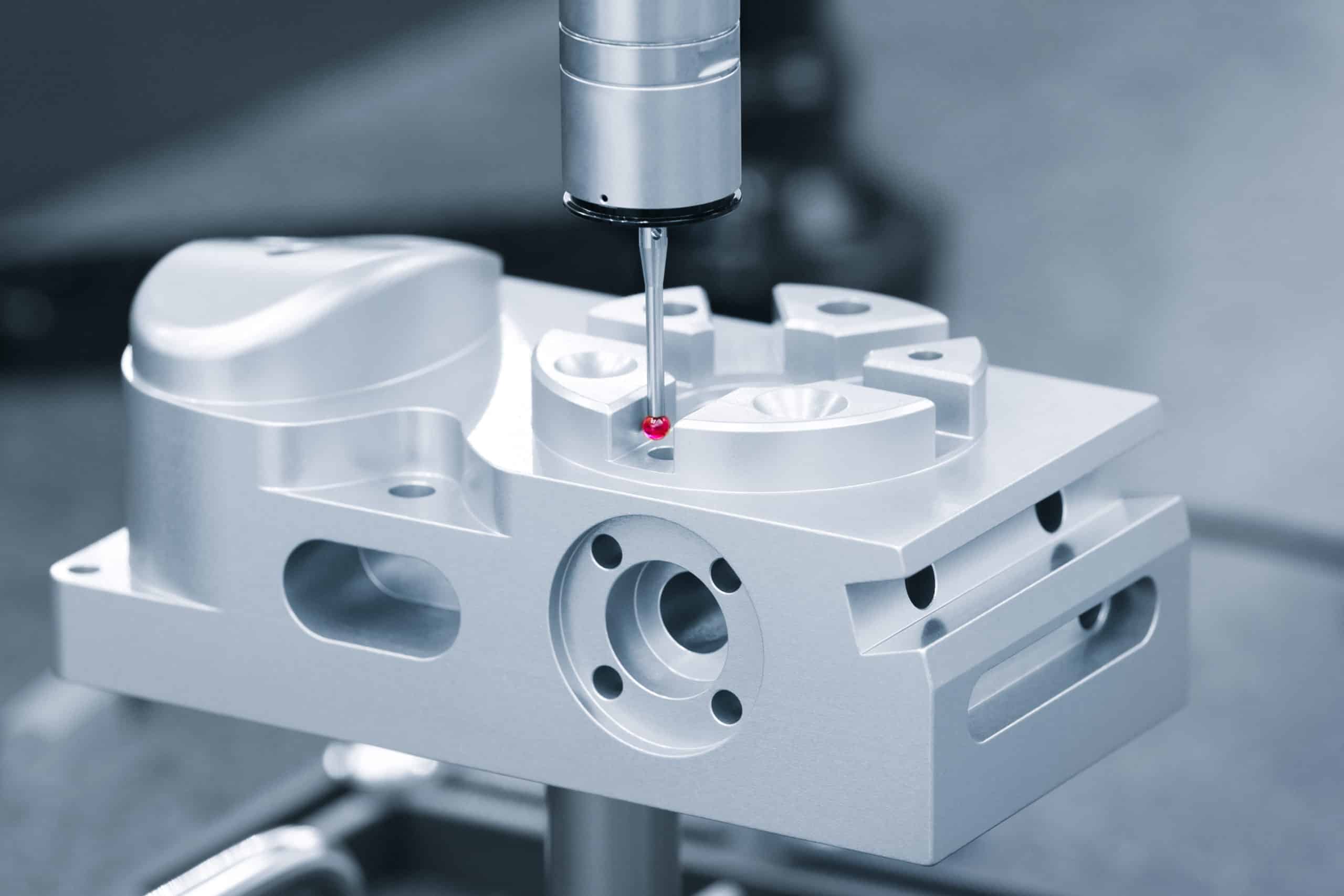Table of Contents
Basics of Hardness
What is Material Hardness?
Material hardness refers to a material’s resistance to permanent deformation when applied force. It measures how resistant a solid matter is to various permanent shape changes when using compressive force.
How is hardness measured, and why is it essential in everyday life, considering its relationship with ductility, elastic stiffness, plasticity, strain, strength, toughness, viscoelasticity, and viscosity?
Hardness and Earth Science
Hardness plays a significant role in determining the properties and applications of various materials. In materials science, hardness is crucial in manufacturing and engineering, influencing the selection of materials for specific uses based on their hardness.
For instance, harder materials like tungsten carbide are used for cutting or drilling tools, while softer materials are used in flexible applications.
In earth science, hardness helps in identifying minerals. For instance, the Mohs hardness test is a widespread technique employed to categorize minerals according to their hardness, ranging from talc (the softest) to diamond (the hardest).

Hardness vs. Toughness
While hardness and toughness are essential properties of materials, they are distinctly different. Hardness, as we’ve discussed, is a material’s resistance to deformation or scratching.
On the other hand, toughness measures how well a material absorbs energy and deforms without breaking. A hard material resists scratches and dents, while a tough material can withstand impact without breaking. Due to its fragility, a diamond can shatter upon a strong impact.
Examples and Applications of Hardness
Real-Life Examples of Hardness
We often come across the property of hardness in our daily routine without even realizing it. For instance, while cutting a tomato with a steel knife, we rely on the hardness of the steel to pierce through the relatively softer tomato.
When you walk on concrete pavement, its hardness prevents it from deforming under your weight. Even when you write with a pencil, the hardness of the graphite core determines how easily it leaves a mark on the paper.

Examples of Hardness Properties
Hardness properties can be observed in various materials. For instance, the hardness of a diamond allows it to cut glass, a property utilized in multiple industrial applications. The hardness of steel, measured using tests like the Rockwell hardness test, determines its suitability for construction or manufacturing tools.
Even in more flexible materials such as rubber, a certain level of firmness is required to withstand the effects of friction and damage over time.
Example of High Hardness
High hardness signifies a material’s suitability for deformation or wear resistance applications. High-hardness tungsten carbide is utilized in the production of cutting tools. Similarly, despite their brittleness, ceramics exhibit high hardness and are used in applications like armor and cutting tools.
Diamonds, the hardest known natural material, are used in cutting, grinding, and drilling due to their high hardness. In each case, the high hardness signifies a material’s ability to resist deformation, making it suitable for demanding applications.
Understanding the Hardness of Materials
A material's hardness
Hardness is an inherent property of materials, much like density or melting point. When a force is applied, the resistance to deformation determines by the material’s hardness, which depends on its internal structure and the strength of the bonds between its atoms or molecules.
For example, with its tightly packed carbon atoms and solid covalent bonds, a diamond exhibits high hardness and resists scratching or indentation.
Hardness and strength are important
High hardness often correlates with high strength, but they are different. Strength refers to a material’s resistance to failure under load, while hardness is its resistance to surface deformation.
A material with high hardness and strength, like steel, can withstand surface wear and internal stress, making it suitable for construction and tool manufacturing applications.
However, it’s important to note that a material can be hard but not strong. For example, glass is hard (resists scratching) but not strong (breaks easily under stress).
Materials with varying hardness
Various materials are known for their hardness. Diamonds top the list as the hardest natural material. Some hard materials, such as corundum (ruby or sapphire), are used for abrasive purposes.
Similarly, tungsten carbide finds application in cutting tools. Conversely, materials like talc and graphite stand out for their low hardness. Understanding the hardness of different materials is crucial in material selection for various applications, from jewelry making to aerospace engineering.
Measuring Hardness
How to tell the Hardness of a Material?
An observed resistance to the deformation of fabric determines the material’s hardness. In indentation hardness tests, a hard indenter is pressed into the material under a specific force. The size or depth of the indentation left on the material’s surface indicates its hardness. The smaller the indentation, the harder the material.
Introduction to Hardness Tests
Different methods and scales exist for various types of hardness tests.
- The Rockwell hardness test, for instance, measures the depth of an indentation made by a diamond cone or a hardened steel ball under a significant load.
- The Brinell hardness test uses a steel ball indenter, and the hardness value is obtained by measuring the diameter of the indentation.
- On the other hand, the Vickers hardness test uses a diamond pyramid as an indenter and is known for its accuracy over a wide range of hardness.
- The Leeb rebound hardness test, a dynamic hardness test, measures the rebound velocity of an object dropped from a fixed height onto a surface.
Various tests are available to measure hardness in different ways. The test selection depends on the material and the specific application under consideration.
Hardness Values and Measurements
Hardness values usually appear on scales specific to the test used. For example, the Rockwell hardness test reports value as a Rockwell hardness number, while the Brinell and Vickers tests report a hardness number based on the indentation diameter.
These values allow for comparisons of hardness between different materials. It’s important to note that while these scales provide a relative measure of hardness, they do not represent a physical property that can be directly measured, like length or mass. Instead, they offer a way to quantify a material’s response to a specific test condition.
Types and Scales of Hardness
Different Types of Hardness
Different types of hardness exist, which gauge various aspects of a substance’s ability to withstand deformation.
- Indentation hardness measures a material’s resistance to deformation under a static load.
- Scratch hardness, as the name suggests, measures a material’s resistance to fracture or plastic deformation due to friction from a sharp object.
- Rebound or dynamic hardness measures a material’s resistance to impact from a known mass falling from a certain height.
Common Hardness Scales
Hardness is quantified using various scales associated with a specific test method. Materials are ranked on the Mohs scale by their ability to scratch one another, with talc rated at 1 (softest) and diamond rated at 10 (hardest).
The Rockwell hardness scale used widely in engineering, is determined by indenting a diamond cone or hardened steel ball. The Rockwell hardness number refers to the depth of the indentation.
The Brinell hardness number comes from the diameter of an indentation made by a steel ball under a known force. This test often applies to metals and alloys with a grain structure too coarse for other hardness tests.
Hardness of Various Materials
Different materials exhibit a wide range of hardness values. On the hardness scale, diamonds, corundums, and tungsten carbides rank at the top.
Metals like steel and aluminum have moderate hardness, while materials like lead and tin are relatively soft. We find materials like talc and graphite on the shallow end of the hardness scale.
Knowing the hardness of different materials is essential in various industries, including manufacturing, construction, geology, and materials science.
Why is Hardness Important?
Hardness is a critical property that influences a material’s functionality and durability. It’s a key factor in determining how a material will respond to mechanical stress, wear, and tear.
From the hardness testing of a tungsten carbide ball to the scratch testing of a softer material, understanding its hardness helps us predict its performance in various applications.
For instance, in manufacturing, hardness measurements guide the selection of materials for specific parts based on their expected stress levels.
Hardness, Material Resistance, and Tensile Strength
Hardness directly impacts a material’s resistance to deformation and wear. Hard materials resist scratches and indentation, making them suitable for high-wear applications. In contrast, some soft metals are more likely to change shape but are also more flexible and less likely to break.
Hardness also correlates with tensile strength, a material’s resistance to breaking under tension. For instance, a Vickers test, which measures a material’s hardness, can also provide insights into its ultimate tensile strength.
Understanding that a high hardness value does not necessarily indicate high tensile strength is essential. Brittle materials, for example, can be hard but may lack tensile strength due to their tendency to fracture.
Hardness and Plastic Deformation
The relationship between hardness and plastic deformation is significant. When a material exceeds its elastic limit, it undergoes a permanent shape change, known as plastic deformation. Hardness, particularly indentation hardness, measures a material’s resistance to plastic deformation.
For instance, during indentation hardness testing, a minor load is applied to create an indentation on the test surface. The indentation depth and the load give a numerical hardness value. Hard materials tend to have shallow indentations and high hardness values, indicating their resistance to plastic deformation. In contrast, soft materials show deeper indentations and lower hardness values, indicating their susceptibility to plastic deformation.
To sum up, the property of hardness is clearly defined and measurable, and it significantly influences the appropriateness of the material for particular uses. Various hardness tests, from the Knoop hardness test to the Leeb hardness value, provide valuable insights into a material’s performance characteristics.
Whether it’s the hardness measurement of a hollow vertical glass tube or the Brinell test for a metal surface, understanding hardness is vital to materials science.
Conclusion
Understanding material hardness, from soft metals to the Rockwell hardness of steel, is crucial in materials science. Whether it’s interpreting a Vickers hardness value or understanding the implications of plastic hardness and localized plastic deformation under continuous loading, hardness plays a pivotal role.
It influences everything from the MM Mohs hardness test to the standard indentation hardness scales and even the rebound or dynamic hardness of materials. Considering the elasticity of materials and surface irregularities, we realize that hardness is a defined property that deserves our attention. So, how will you apply your understanding of hardness in your next project or material selection?
Remember, the test material you choose can significantly influence the outcome. Let’s continue to explore the fascinating world of hardness and its different values.
Frequently Asked Questions
Material hardness refers to a material’s resistance to deformation, indentation, or scratching. It measures how resistant a solid matter is to various permanent shape changes when applied compressive force.
Hardness is typically measured using specific tests that apply a force to a material and measure its resistance to deformation. The Rockwell hardness test, Vickers hardness test, and Brinell hardness test are all examples of standard tests used to measure hardness.
While both are important material properties, hardness, and toughness differ. Hardness describes how well a material can resist surface scratching or deformation. At the same time, toughness measures a material’s capacity to absorb energy and undergo deformation without fracturing.
A high hardness value typically signifies a material’s resistance to deformation or scratches. It often indicates that the material suits applications requiring wear resistance or high mechanical stress.
Hardness, particularly indentation hardness, measures a material’s resistance to plastic deformation. When a fabric responds to a force that exceeds its elastic limit, plastic deformation occurs, resulting in a permanent change in its shape.
Understanding material hardness is crucial as it influences a material’s functionality and durability. It’s a critical factor in determining how a material will respond to mechanical stress, wear, and tear. From manufacturing to construction, hardness plays a significant role in material selection for various applications.






